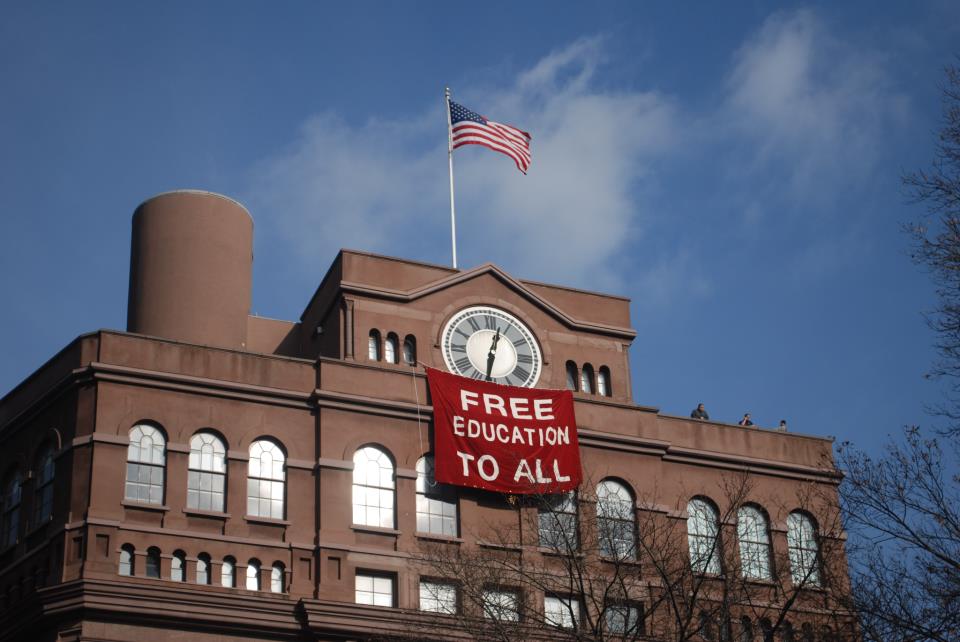Like many college students, when I hear the words “free college tuition,” I become ecstatic and automatically think it is a good idea. With Gustavus costing approximately $50,000 a year, having free college tuition would cause a large change in student loans and work-study. But is the concept of “free college” really so great?
If college were to be free, then it would only be available to a select group of people who test out, which contradicts everyone’s right to education. “The paradox of free college is that the institutions may have to limit the number of spots or reduce quality,” said Ben Wildavsky, director of higher education studies at the Rockefeller Institute of Government.
Wildavsky also stated that “in some countries with free tuition, it’s often students who can afford fancy private schools that get the preparation needed to be admitted to the free universities.”
Many who work with scholarship programs understand that most free college plans do not cover the true cost of college. Many low-income students are already receiving grants and scholarships that cover the cost of tuition but they still need to cover things like books and living expenses. Living expenses can take up to 35 percent of a person’s income in the United States, which is a huge expense that is unpaid for with the idea of free college.
In the spring of 2015, presidential candidate Bernie Sanders introduced his “College for All Act.” This is a bill to make all four-year public colleges and universities tuition-free. This seems like a great idea at first glance, however, this idea would cost the United States an approximate $70 billion per year, on average more than twice what the federal government spends on Pell Grants. A Federal Pell Grant differs from a loan and does not have to be repaid.
A question we should ask ourselves is: “Would free college make higher education more efficient, more innovative and would it be of higher quality education?” The answer is no.
Traditionally there are two routes to take in order for something to be more affordable, the first is to subsidize in order to bring the price down and the second is making something cost less by using different materials, or finding other manufacturers.
Our educational system sometimes fails to deliver good quality pathways that many students need in order to be successful in their jobs as they become adults. A study in 2015 by the Gallup-Lumina Foundation found that only four in ten Americans agree that colleges are changing to “better meet the needs of today’s students.” Only 13 percent of respondents felt that college graduates are “well-prepared for success in their jobs post college.
We often compare the high cost of American colleges to how much cheaper university is in Europe. But it’s most likely not a fair comparison. In many European countries most universities are public and students often live off-campus in their family homes. In 2014, Germany declared that all of their universities are to be tuition free, even for international students.
As a result, foreign enrollmentin public German universities reached a record high this past year. The German Academic Exchange Service revealed that over 300,000 foreign students were enrolled in German universities in the 2013-2014 academic year, representing about 10 percent of the total higher education enrolment in Germany for that year.
German universities also have a hard time finding places for classrooms and housing. With the increase in students there are not enough academic buildings and places for them to live.
There are around 400,000 new students every year and only about 230,000 places to house them. This means that around 50 percent of students do not have a place to live. So where does the funding come from? The answer is taxes. Germany had the second highest income tax of 34 different countries, according to a study from the Organization for Economic Co-operation and Development. In 2012 alone, Germans were paying approximately 49.8 percent of their incomes to their government.
When some ideas are proposed they sometimes sound too good to be true, and this is one of those cases. Although the idea of free college is amazing, there are many hidden downfalls. These downfalls are not small and would affect our country greatly. The next time you think, “Oh, this is too good to be true!” it just might be, so do some research and get to know the topic better. Knowledge is power!
